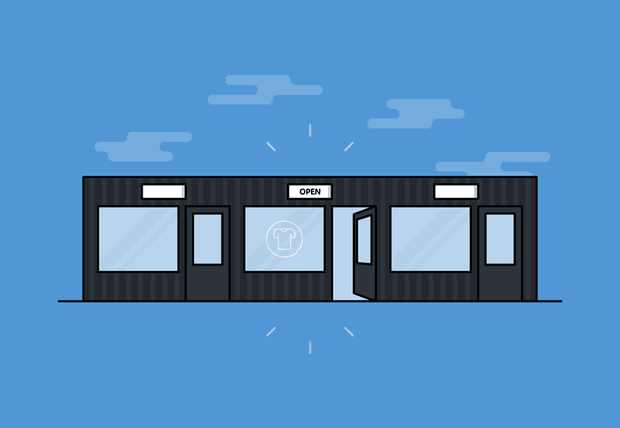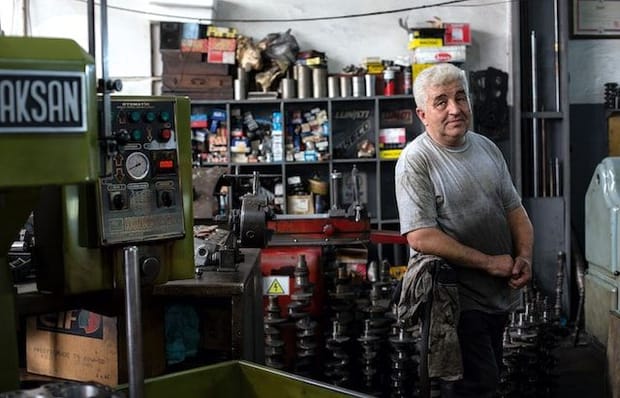Ever thought about starting your own pop-up shop? Guest author James D. Burbank explains how it's done...
The history of the modern-day pop-up shop has been eventful, with the concept going in and out of style quicker than the fashions promoted by many of the brands populating these stores.
Pop-up shops have a strong connection with the fashion world, with established brands finding new venues to promote their products to new crowds in new ways.
Since then, entrepreneurs have joined in, using the flexibility of a pop-up shop arrangement to test the waters for new product lines and build buzz around their brands.
Recently, we’ve started to see another shift: e-commerce businesses opening their own pop-up shops. The value of a face-to-face customer experience is not to be ignored, despite the struggles on the British high street.
Pop-up shops have many benefits for brands. They provide an easy opportunity for brand promotion, help brands reach new markets and secure customer feedback without needing to commit to a lengthy lease and the costs that come with it.
It’s no surprise that the industry has rapidly expanded in the UK, with the country's pop-up shops generating more than two billion pounds back in 2014.
The chances are that this figure is dramatically higher today.
For emerging brands it may seem like a no-brainer to try out a pop-up shop, but the challenges must not be overlooked.
Finding the Space
Your first job is to find a venue that will host your first foray into the world of pop-up shops.
Although this seems to be a daunting prospect, there are plenty of resources to help you source a suitable space. Platforms like Appear Here match brands to landlords, so that finding the right space for your pop-up shop is actually very cheap - and quick.
Of course, you can always complete this process independently and try to procure a venue on your own. You could check out local community spaces (like church halls, railway stations or community centres) as they are often open to such ventures.
Another approach is to work with similar but non-competitive brands, either teaming up to get access to more expensive spaces or setting up within your partner's permanent space. Clearly, it’s best to seek arrangements with businesses that you already have relationships with.
Overall, it’s all about finding a balance between affordability, footfall, and how closely the location matches your target market.
Setting Up Shop
Once you have found the right space for your pop-up shop, it’s time to start thinking about setting it up and turning the empty space into the best possible showcase for your brand. The size of your space and the nature of your goals determine how complicated this will be.
For example, if you simply rent out a cart of some kind, you will want to think about product placement and displaying your brand logo as visibly as possible. This type of pop-up arrangement means you won’t have too many decisions to make.
If you have instead chosen an actual shop, there is far more to think about - furniture and furnishings, the point of sale, shop layout, storage and so on. Your choices should depend chiefly on your goals, with budget taken into account.
For example, if your goal is to maximise sales of a new product line, you will dedicate the most prominent displays to these products and restrict other products to quieter areas of the store - if you sell them at all.
If you’re short on inspiration, this article from Hubspot features some of the more inventive and visually stunning pop-up shops from around the world. You can also check out Appear Here’s success stories for more ideas.
As you can see, your pop-up shop can be anything you want it to be.
There are two main takeaways here:
- The visual identity of your brand should be front and centre of your pop-up shop
- Try to create an experience that fits your brand
Assembling and Training a Team
Only the bravest entrepreneurs try to run their pop-up shops single-handedly. Unless you’re running anything other than a small stall, you’ll need additional staff members on hand to help you out with customer service, admin, cleaning, and keeping the shelves full.
Don’t leave assembling your team until the last minute - you need to set aside adequate time for hiring (if applicable) and training.
You’ve got several potential sources of labour to choose from:
- Current employees (even if they’re not normally a retail assistant or sales person)
- Friends and family members (be careful!)
- Temp workers
- Volunteers (if you’re a charity)
Whatever approach you choose, the most important thing is to train your team.
Remember: not all your workers will come from a retail or sales background, so your training should include basic selling techniques.
Again, keep your goals in mind when shaping your training plan. For example, if you want to direct customers to use the in-store tablets to order items online, ensure that all staff members know how to use the tablets and how to help visitors who may be struggling with them.
Remember: selling isn’t everything in a pop-up shop.
Pop-up shops are often more about brand promotion and interacting with potential customers than they are about actually moving products.
Day-to-Day Shop Management
Your carefully assembled and trained team will know how to handle the majority of their tasks, but this doesn't mean that you won't be involved on a daily basis.
Make an effort to be present as often as possible - pop-up shop management is about more than just making sure everyone stays on-task.
Your time at your venue is short, so it’s vital that you make changes quickly if you’re not getting the results you’d hoped for. Don’t be afraid to switch up prices, your sales strategy, and even your store layout if things aren’t working out. Listen to feedback from your staff and customers.
Come and get the last few bits for @LondonLGBTPride at the #Popupshop and also get a free gift bag from our sponsors pic.twitter.com/m3yZChwmfK
— 🏳️🌈Tom 🏳️🌈 (@tombyford) July 7, 2017
If you’re managing workers who aren’t working Monday-Friday, 9-5, your best bet is to use some rota software to make sure the right workers are in-store at the right time. You can use software like RotaCloud to manage leave requests, too.
And remember: look for software that lets you pay monthly so that you can cancel the account once your pop-up shop closes.
The important thing is you communicate with your staff and your customers and fine-tune the entire experience that your pop-up shop provides to your visitors.
Final thoughts
A pop-up shop can be a fantastic thing for e-commerce businesses and other start-ups. Managing a pop-up shop has its challenges and it takes a lot to make it work, but when you pull it off the right way, it can turn your fledgeling business into a force to be reckoned with.
Author: James D. Burbank has spent more than 15 years in the trade show industry. He is currently taking a breather and blogging on BizzMarkBlog and elsewhere.





